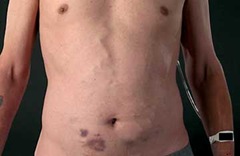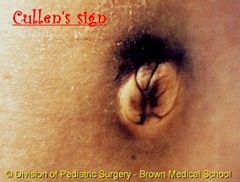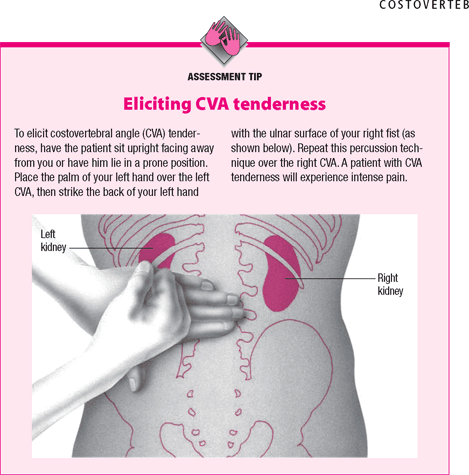Continue to read, by clicking on READ MORE.
furuncle:
Aetiology-staphylococcal infection of hair follicle
clinical features-
- severe pain & tenderness which are out of proportion to size of furuncle
- movements of pinna painful
- jaw movements painful
- if occludes canal ,conductive deafness

Examination-
- primary lesion is often a small pustule that may enlarge to become a furuncle
- edema, erythema, tenderness and
- fluctuance if abscess forms
- periauricular lymph nodes enlarged & tender
treatment-
- early stages(without abscess)-
- systemic antibiotics,
- analgesics,
- local heat,
- ear pack of 10% ichthammol glycerine (reduces edema)
- late stage(with abscess)- incision &drainage and same as above
Extension of the infection to the pinna and periauricular soft tissues may warrant parenteral antibiotic therapy.
{note:
since as you know that hair follicle present only in outer third of ear canal(cartilagenous part) furuncle occurs in outer part only
recurrent furunculosis - suspect diabetes as cause}
Diffuse otitis externa:
- can involve whole of canal ,tympanic membrane & pinna
- also known as ’swimmers ear’
cause
- The most common precipitant of otitis externa is excessive moisture. Excessive moisture removes cerumen and increases the pH of the external auditory canal, situations that provide a good setting for bacterial growth. and
- trauma (due to scratching ,vigorous cleaning unskilled instrumentation)
- both of the above two impair the canal's natural defenses,& allow bacterial entry into ear canal
- The most common causative organism is Pseudomonas species and Staphylococcus aureus. Other pathogens less commonly cultured include Proteus mirabilis, Streptococci species, coagulase negative Staphylococci, and various gram negative bacilli.
clinical features-
Acute otitis externa- Chief symptoms include Otolagia& Otorrhea.
can further be divided into
The preinflammatory stage begins with itching, edema and a full sensation in the ear.
- acute inflammatory stages. It is again divided into mild, moderate, or severe.
- As the infection progresses increased itching and pain ensues with mild erythema and edema on physical exam, however the canal lumen remains patent with cloudy secretions.
- During the moderate phase, the itching and pain intensify, and although the lumen remains patent, significant edema and debris decrease its size. Secretions are noted to be exudative and more profuse.
- Finally, in the severe stage of the disease, the pain is usually intolerable and is often intensified by manipulation of the skin and soft tissue around the ear. The lumen of the EAC may be obliterated by edema, debris and purulent otorrhea.
- The auricle and periauricular soft tissues are often involved, and regional lymph nodes may become palpable.Fever may be present, but if it exceeds 38.3°C (101.0°F), more than simple local otitis externa should be considered. Lymphadenopathy just anterior to the tragus is common.
- In patients where the disease does not resolve after treatment, a subacute or chronic form may occur.
treatment:
- ear cleaning is very important
- analgesics like codeine or NSAIDs used
- topical antibiotics
- An aminoglycoside combined with a second antibiotic and a topical steroid such as neomycin, polymyxin B, and hydrocortisone used to be the most commonly prescribed topical antibiotic. However, caution must be used to watch for a hypersensitivity reaction to the neomycin and ototoxicity from the aminoglycoside. This preparation should not be used in cases of a perforated tympanic membrane, which is not always easy to determine in cases of otitis externa.
- Fluoroquinolones are not assoiciated with ototoxicity and ofloxacin is safe in cases of a perforated tympanic membrane.
- Ofloxacin otic is the drug of choice when a perforated tympanic membrane cannot be ruled out.
- Systemic Treatment.: Oral antibiotics are rarely needed but should be used when otitis externa is persistent, when associated otitis media may be present or when local or systemic spread has occurred. The latter should be suspected if the patient's temperature is higher than 38.3°C (101.0°F), if initial pain is severe or if regional lymphadenopathy of the preauricular or anterior or posterior cervical chains is present.
{note:Currently, the only ototopical drop approved by the FDA for use in an open middle ear is ofloxacin. }
Chronic Otitis externa: Is defined when the duration of the infection exceeds 4 weeks or when more than 4 episodes occur in 1 year.
clinical features-
- characterized by irritation & strong desire to itch.
- discharge is scanty &dry up to form crusts
- meatal skin thick & swollen
- rarely skin becomes hypertrophic leading to meatal stenosis (CHRONIC STENOTIC OTITIS EXTERNA)
{note: discharge in otitis externa is serous type & in otitis media is mucoid type (this is due to presence of mucous membrane in middle ear)
treatment:
- reduce swelling=10% ichthammol glycerine
- reduce itching=antibiotic & steroid cream
- chronic stenotic otitis externa=surgical procedures to enlarge and resurface the EAC, such as conchal meatoplasty, are indicated.
Malignant otitis externa:"Osteitis of the base of the skull,"
Necrotizing or malignant otitis externa is a life-threatening extension of external otitis into the mastoid or temporal bone.
Known as Malignant due to high risk of Complications.
Aetiology-
- Most commonly caused by Pseudomonas aeruginosa, (98%)
- occurs most often in elderly patients with diabetes mellitus. However, all immunocompromised patients, especially those with human immunodeficiency virus (HIV) infection, are at risk.
- begins as an acute otitis externa and frequently progresses to a skull base osteomyelitis with resultant cranial neuropathies.
Clinical features-
- The typical patient is an elderly diabetic with poor metabolic control and evidence of otitis externa not responding to the usual local therapy.
- The typical complaints are deep-seated aural pain, discharge, and fullness.
- A history of diabetes or an immunocompromised state (neoplasm, immunosuppressive therapy, HIV, etc.) should be elicited.
- Examination of the involved ear canal reveals inflammation and granulation tissue at the bony cartilaginous junction. Purulent secretions are common, and excessive inflammation may occlude the canal and obscure the TM
{note:One of the hallmarks of necrotizing external otitis is granulation tissue in the external auditory canal, especially at the bone-cartilage junction.}This otoscopic finding is of extreme importance.
- The infection may extend to the cartilaginous skeleton of the ear canal and through Santorini's fissures to reach the temporal bone, causing osteitis. One of the hallmarks of this extension is granulation tissue in the bone-cartilage junction of the external auditory canal.
- Cranial nerve involvement may appear as early as one week after the onset of symptoms, with the facial nerve most commonly involved, followed by X and XI.
Diagnosis
Special alertness is required when external otitis is refractory to treatment and patients complain of severe otalgia, especially at night. The diagnosis of necrotizing external otitis is based on the clinical presentation and confirmed by laboratory tests and imaging studies.
LABORATORY TESTS
Mandatory laboratory tests include an erythrocyte sedimentation rate (ESR), white and red blood cell counts, glucose and creatinine levels, and culture of ear secretions. The ESR is typically elevated in necrotizing external otitis; therefore, it is a useful indicator of treatment response. Before topical or systemic antibiotic therapy is started, ear secretions should be cultured, because susceptibility patterns may change after the initiation of treatment (i.e., bacteria might become resistant to an antibiotic during treatment).Pathologic examination of granulation tissue removed from the external auditory canal is essential to exclude malignant processes, which may present as nonresponding inflammatory disease.
IMAGING STUDIES
Imaging to prove the extension of infection to bony structures is generally necessary to establish the diagnosis of necrotizing external otitis.
Imaging modalities include
- computed tomographic (CT) scanning,
- technetium Tc 99m medronate methylene diphosphonate bone scanning, and
- gallium citrate Ga(gallium) 67 scintigraphy.
CT scanning is used to determine the location and extent of diseased tissue.
- The temporal bone is the first bone to be affected, with imminent involvement of the petrous apex and mastoid.
- Extratemporal bone extension has become rare since the introduction of powerful antibiotics.
- In evaluating the CT scan, it is important to remember that at least one third of bone mineral must be lost before radiologic changes become apparent; conversely, bone remineralization continues long after the infection is cured.
- Thus, as related to the infectious process, pathology is late to appear on the CT scan and late to disappear.
- These factors limit the usefulness of CT scanning as a follow-up tool.
Tc(technitium) 99m bone scanning:
- Both osteoclasts and osteoblasts absorb 99mTc.
- Hence, bone scanning can locate a pathologic process in bone but is not informative about the nature of the process (infectious or other).
- Because the 99mTc scan remains positive as long as bone repair continues, this imaging modality is not helpful in follow-up.
gallium citrate Ga(gallium) 67 scintigraphy. :
- Since 67Ga is absorbed by macrophages and cells of the reticuloendothelial system, scanning with this radioisotope is a sensitive measure of ongoing infectious process .
- If 67Ga scintigraphy is available, it should be used for initial diagnosis and as a follow-up tool.
- By using imaging modalities in combination, it is possible to prove that the temporal bone is afflicted (CT scanning and 99mTc bone scanning) with an infectious process (67Ga scintigraphy).
Treatment:
- The excellent antipseudomonal activity of fluroquolones has generally made them the treatment of choice for necrotizing otitis externa,
- although a combination of a beta-lactam antibiotic and aminoglycoside is also effective.
- In severe cases, a prolonged course of parenteral antibiotics may be needed, but the excellent gastrointestinal absorption of the fluoroquinolones allows milder infections to be treated with a two-week course of oral therapy.
- Treatment should also include surgical debridement of any granulation or osteitic bone
otomycosis:
cause-
- aspegillus niger ,
- aspergillus fumigatus ,or
- candida albicans.
The most common pathogen is Aspergillus (80 to 90 percent of cases), followed by Candida.
Classically, fungal infection is the result of prolonged treatment of bacterial otitis externa that alters the flora of the ear canal. Mixed bacterial and fungal infections are thus common
Clinical features :
- the most common symptoms of otomycosis are pruritus deep within ear& an irresistible urge to scratch.
- The itching generally progresses to dull pain with or without drainage.
- The accumulation of fungal debris in the inflamed, narrowed canal often leads to a complaint of hearing loss.
- Tinnitus is also a common presenting complaint.
- however, with severe infections pain will also occur
examination with otoscope:Physical examination generally demonstrates canal erythema, mild edema and the presence of white, gray, or black fungal debris within the canal.
fungal mass is seen as "wet piece of filter paper"
- A.niger-black headed filamentous growth.

- A.fumigatus-pale blue or green
- Candida-white or creamy deposit.

treatment:
- Cleansing of the ear canal by suctioning is a principal treatment.
- Acidifying drops, given three or four times daily for five to seven days, are usually adequate to complete treatment.
- Because the infection can persist asymptomatically, the patient should be reevaluated at the end of the course of treatment. At this time any further cleansing can be performed as needed. If the infection is not resolving, over-the-counter clotrimazole 1 percent solution (Lotrimin), which also has some antibacterial activity, can be used
- Nystatin is effective against candida
Herpes Zoster Oticus (Ramsay Hunt syndrome) -some information taken from drtbalu wonderful educational site on ENT.
Ramsay Hunt syndrome is a disease affecting the external auditory canal associated with the following symptom complexes:
1. Lower motor neuron type of facial nerve palsy
2. Herpetic blisters of the skin of the external auditory canal
3. Otalgia
Pathophysiology:
The primary pathophysiology is located in the geniculate ganglion of the facial nerve. Geniculate ganglion is found to be affected by Human Herpes virus type 3 i.e. (Varicella zoster virus). Varicella zoster virus have been identified from tears of these patients by polymerase chain reaction. Infact Varicella zoster virus have also been identified from tears of patients with Bell's palsy.
Clinical features:
The classic Ramsay Hunt syndrome is associated with
1. Patient has deep seated pain in the affected ear. The pain is intermittent in nature, radiating towards the pinna of the ear. There is associated diffuse dull aching background pain.
2. Vertigo and ipsilateral hearing loss,
3. Tinnitus, and
4. Facial palsy (LMN type).

5. Rash or blisters can also be seen along the distribution of nervus intermedius. These herpetic blisters in the external auditory canal may become secondarily infected causing cellulitis.

Treatment:
1. Steps towards alleviating pain: Carbamazepine can be prescribed in doses of 400 mg / day in divided doses. Temporary relief of Otalgia in geniculate neuralgia may be achieved by applying a local anesthetic or cocaine to the trigger point, if in the external auditory canal.
2. Corticosteroids and oral acyclovir can be administered. Steroids in the form of prednisolone can be administered orally in doses of 10mg twice a day. Steroids should not be stopped abruptly. The dosage needs to be tapered. Acyclovir can be administered in doses of 800 mg orally 5 times a day.
3. Management of vertigo: can be managed using meclizine in doses of 25 mg orally 4 times a day.
4. Care must be taken to prevent exposure keratitis because of the inability to close the eye lids. The patients must wear protective goggles.
Acute (bullous) and chronic (granular) myringitis :
Acute myringitis is usually caused by a mycoplasma or viral infection and is observed in adults and children.
It is characterized by hemorrhagic bullae involving the tympanic membrane and a flulike syndrome.
It is self-limiting and requires pain and fever management.
Chronic myringitis is defined as de-epithelization of the tympanic membrane, granulation tissue formation, and discharge.
Treatment includes topical application of eardrops, a caustic solution in unresponsive cases, and mechanical removal of polypoidal granulations.
Eczematous otitis externa:
aetiology-hypersensitivity to infective organisms or topical ear drops such as neomycin
clinical features -irritation, vesicle formation, oozing & crusting.

The dermatitis is generally confined to the site of contact with the allergen
treatment-withdrawal of agent causing it & application of steroid cream.
Seborrhoeic otitis externa:
Associated with Seborrhoeic dermatitis (dandruff) of scalp
Malassezia furfur, a lipophilic yeast, is thought to play at least some role in the development of this condition.
clinical features- itching
- greasy yellow scales in canal ,over lobule & postauricular sulcus.

treatment-
- ear cleaning
- cream containing salicyclic acid & sulphur
- treat dandruff
Neurodermatitis:
cause-urge to scratch due to psychological reasons
clinical -
- only complaint is itching
- this may lead to secondary bacterial infection
treatment-
- sympathetic psychotherapy & treat secondary infection
- ear pack or bandage to prevent scratching

















